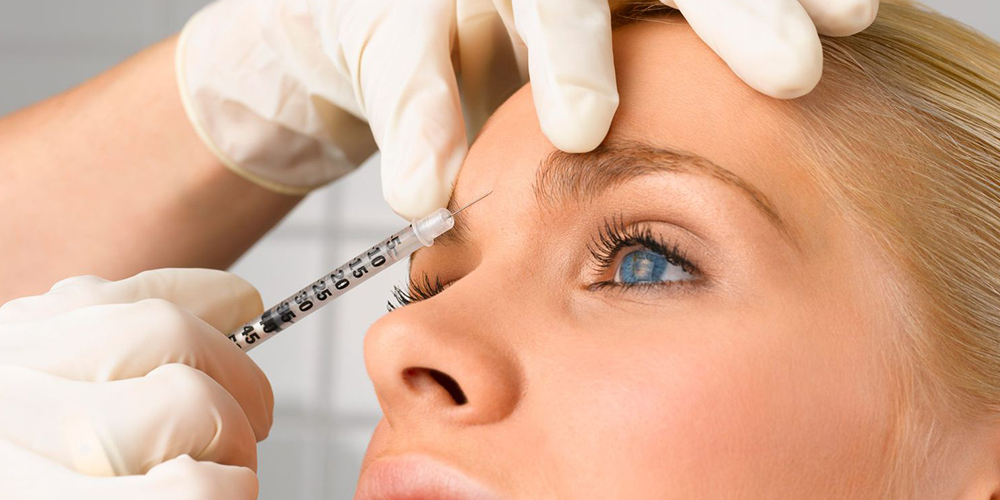- +91 97727 60561
- info@drdhabhai.in
- Wed - Sat: 5 PM - 8 PM Sunday Off

“BOTOX” has recently become almost synonymous with youthful beauty and age-defying aesthetics. This revolutionary treatment, derived from botulinum toxin, has taken the world by storm, transforming how people view and approach ageing. With its promise of reducing wrinkles and fine lines, BOTOX has garnered a massive following among men and women of all ages. However, behind the allure of a smooth and youthful appearance lies a tapestry of science, history, and controversies surrounding this beloved wrinkle eraser.
BOTOX, short for botulinum toxin, is a neurotoxic protein produced by the bacterium Clostridium botulinum. While “toxin” might raise eyebrows, BOTOX has found its place in modern medicine and aesthetics due to its unique paralyzing effects on muscles. When injected in small amounts, BOTOX temporarily weakens targeted muscles, preventing them from contracting. This action smooths out wrinkles and lines, giving the skin a rejuvenated look. The scientific understanding of BOTOX’s mechanism of action and its safe usage has been a game-changer in cosmetic dermatology.
The history of BOTOX dates back to the early 19th century when the German physician Justinus Kerner first identified the botulinum toxin as the culprit behind the deadly food poisoning known as botulism. It wasn’t until the 1950s that researchers began exploring the therapeutic potential of BOTOX for medical conditions involving muscle overactivity, such as strabismus (crossed eyes) and dystonia (involuntary muscle contractions). The first documented use of BOTOX for cosmetic purposes occurred in the late 1980s, when ophthalmologist Dr. Jean Carruthers and her husband, dermatologist Dr. Alastair Carruthers, noticed the smoothing effect of BOTOX on wrinkles during their clinical practice.
The discovery of BOTOX’s cosmetic benefits triggered a cosmetic boom like no other. Its popularity skyrocketed, quickly becoming one of the most sought-after non-surgical treatments worldwide. The advent of BOTOX paved the way for other injectable treatments, such as dermal fillers, which further revolutionized the aesthetic industry. Celebrities and ordinary people alike embraced the power of BOTOX to preserve their youthful looks, contributing to a societal shift towards accepting cosmetic procedures.
While often associated with pursuing beauty, BOTOX has proven to be far more than just a wrinkle eraser. The medical applications of BOTOX have extended to various fields, including neurology, urology, and even mental health. Its muscle-paralyzing properties have been harnessed to treat chronic migraines, excessive sweating (hyperhidrosis), an overactive bladder, and even depression. As research continues, the potential therapeutic uses of BOTOX continue to expand, promising hope for patients with various medical conditions.
Despite its widespread acceptance and applications, BOTOX has not been immune to controversies. Critics raise concerns about commercializing beauty standards, arguing that the pressure to look younger may perpetuate unrealistic ideals. Additionally, some have questioned the long-term safety of BOTOX, although extensive studies have shown its relative safety when administered by qualified professionals. The “frozen face” phenomenon, where excessive BOTOX use leads to an unnatural expressionless appearance, has also sparked debates about the aesthetics of cosmetic interventions.
As with any medical procedure, the art and skill of the practitioner administering BOTOX play a crucial role in the outcome. Understanding facial anatomy, tailoring treatments to individual needs, and avoiding overuse are vital aspects of responsible BOTOX administration. Choosing a qualified and experienced practitioner is essential to achieving natural-looking results and avoiding potential complications.
As we venture further into the 21st century, the future of BOTOX appears bright. Ongoing research aims to improve formulations, increase longevity, and explore novel applications for this versatile neurotoxin. Combining BOTOX with other cutting-edge treatments may lead to synergistic effects, offering patients even more effective and personalized solutions for their aesthetic and medical concerns. Moreover, focusing on body positivity and embracing natural ageing may shape the narrative of cosmetic procedures, encouraging individuals to make choices that align with their values and desires.
BOTOX, the beloved wrinkle eraser, has transcended from a deadly toxin to a powerful tool in medicine and aesthetics. Its scientific journey, historical development, and medical applications have reshaped how we perceive ageing and beauty. While controversies persist, the benefits of BOTOX cannot be denied. As we move forward, striking a balance between embracing ageing gracefully and utilizing advancements in science and medicine will pave the way for a more inclusive and accepting future.